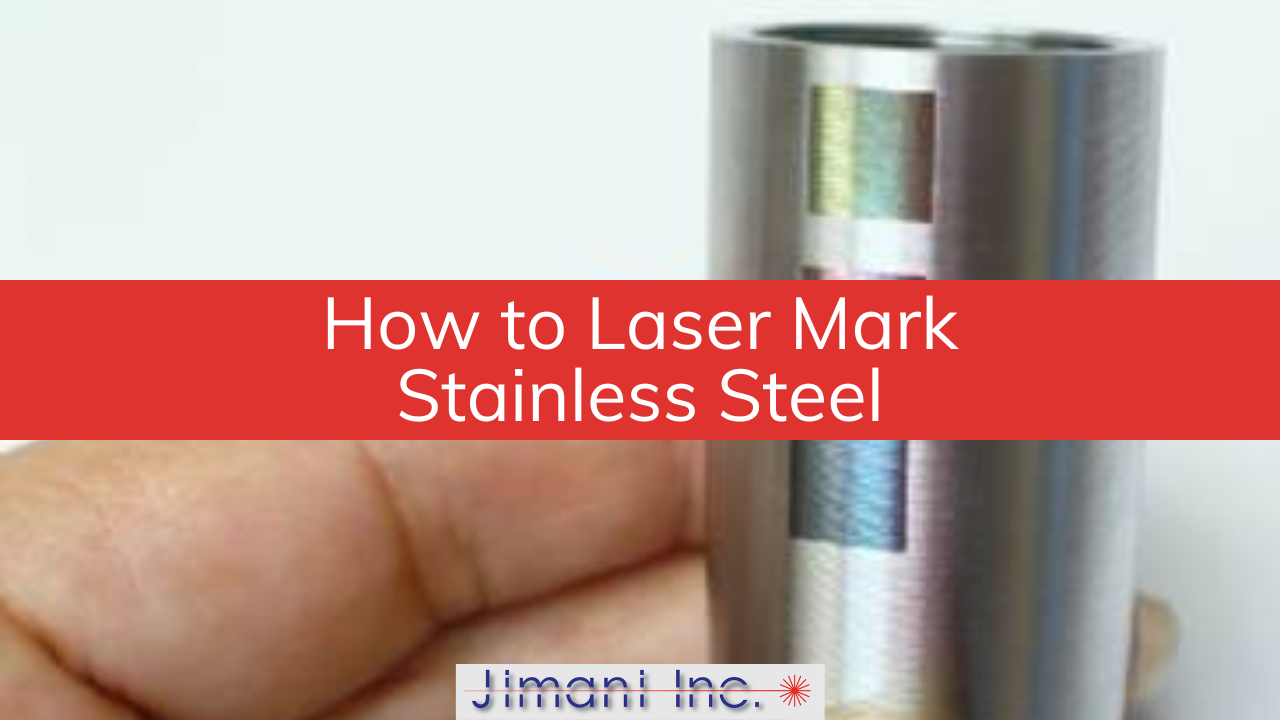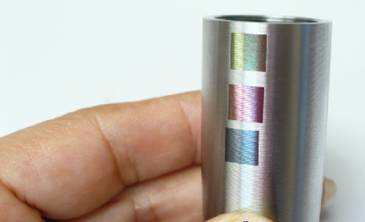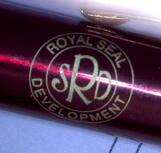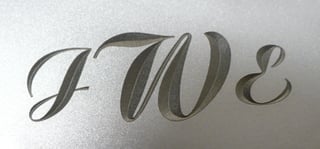Laser Marking 301: Laser Marking Techniques
Editor’s Note: This article was first published in Photonics Online. You can read the original...

Fiber lasers are an ideal tool for many stainless steel marking applications. The fiber laser itself is rugged, economical and no maintenance and allows for a variety of functional and decorative marking and engraving techniques to be performed on stainless steel.
In general, there are four types of laser marking which can be performed on stainless steel; stain marking, ablation, dark marking and engraving. Each of these marking methods has its own range of laser settings and creates a mark in a different way. Ablation, dark marking and engraving remove material from the surface of the substrate being processed to create a permanent mark while stain marking causes an oxide layer to form on the surface, removing none of the underlying material. Stain marking is one of the most common techniques used for laser marking stainless steel so let’s begin there.


Stain marking is a non-penetrating method for laser marking material. Stain marking is accomplished by heating the surface of the material with the laser. This causes an oxide layer to form and, depending on the thickness of the oxide layer, creates the appearance of a color on the surface. In addition to the thickness of the oxide layer, the grade of stainless will influence the color range that is possible with this method. Typically, however, gray, dark brown, and black stain marks are the easiest, and therefore most common colors of stain mark. A wider range of marked colors are available with a variable pulse width MOPA type fiber laser although they are generally more difficult to use because of the wider range of possible laser settings.
When laser stain marking, there are a couple of considerations which greatly affect the outcome. The focused spot size of the laser is of the utmost importance when stain marking. Too small of a focused spot will cause material vaporization rather than just heating to the point where an oxide layer will form. Laser output power and pulse frequency as well as galvo scanning speed are all important when using this marking technique. You can read more about the specifics of laser settings here.

Dark marking is really a misnomer. The "color" of the marking is a function of the oxide layer with stain marks or the color or reflectivity of the underlying surface when doing ablation marking. Dark marking is a technique which roughs up the marked area and provides a surface which lends itself to trapping and coloring applied to that marked surface. The coloring can be something wiped on and then wiped off which will trap small amounts of the coloring in the rough surface created by the dark marking technique or something that will occur almost naturally as the part is handled and finger oils gets trapped in the surface. For this reason, the medical industry would never use a dark marking technique for parts placed in sterile environments but it is perfect for items such as the one shown in the photo. Low speed and high power settings are what is required.

Ablation marking stainless steel removes or ablates a microns thin layer of material from the surface to create a light colored contrasting mark. Ablation marking applies very little heat to the surface with little or no penetration into the material.
Faster marking speed, or the speed that the scanning mirrors are moving the laser beam over the surface of the material, and lower laser output power typifies ablation marking process settings. The laser settings that are using for ablation marking are significantly different from those used when engraving or stain marking. Ideally, ablation marking is accomplished with high peak power and short pulse width (the amount of time that the laser is on for each laser pulse).

Another very common method for laser marking stainless steel is engraving. Engraving creates a much deeper mark then ablation, making the mark created by the process most durable and longer lasting in abrasive environments. Engraving is typically accomplished with increased laser power and lower marking speeds.
Our experience at Jimani is that deeper laser engraving is best accomplished with marking speeds of about 10-20 inches/second using multiple passes in order to remove thin slices of material until the desired depth is achieved. Using very slow marking speeds in order to remove a lot of material in a single pass will result in a slaggy bottom in the trough of the engraving and an accumulation of slag at the edges of the engraving. Multiple laser passes with different fill angles at higher speeds allow for more material removal and cleaner troughs and edges. More laser passes results in deeper marking until the laser beam begins to go out of focus or the vaporized material can’t escape from a very narrow trough. The sample shown in the photo was bead blasted after marking to remove slag buildup from the edges of the marking.
Laser marking stainless steel has the ability to produce a wide range of looks and is used in many applications across diverse industries. The best way to get a feel for how broad a range laser marking stainless has is to look at some specific applications.
Below you’ll find a short list of some of the diverse laser marking stainless steel applications we’ve completed over the years. From custom, specialty marking to high precision medical marking this list of applications should serve as a robust introduction to the styles of marking a laser system can perform on stainless steel.
A Jimani Low Cost Fiber Laser Marking System is a fully complete system and customizable tool for space challenged manufacturing and laser marking job shop environments.
All Jimani Low Cost fiber laser marking systems use Leopardmark or Prolase, a user friendly, proven, robust laser marking software package that is very easy to use for importing and manipulating graphics files for brands, logos, and schematic files.
Contact Jimani and see what they can do for you with a state of the art laser marking system.
Editor’s Note: This article was first published in Photonics Online. You can read the original...
Types of laser marking generally fall into one of three categories: Ablation, Engraving and Stain...
Editor's Note: this article is a reprint of one that originally appeared on Photonics Online.
...